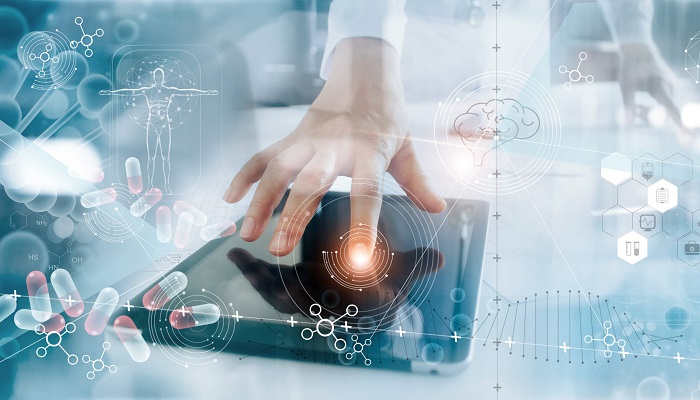Pharmaceutical labs happen to work with data. Immense data which needs to be stored, assessed, shared and also retrieved. Data which happens to be critical right from serving the requirements of the patient to driving outcomes which the insurance companies, government as well as the pharmaceutical companies seek.
Pharma labs also deal with a lot of intricate laboratory processes which go on to include working based on fragmented data systems, collection as well as validation of data from the varied sources, and also demands from the regulatory bodies when it comes to high standards of data integrity. These go on to create an ideal opportunity for pharma laboratories to take into account digitizing the complete laboratory workflow so as to streamline processes, control costs and at the same time also deliver real-time as well as precise information.
It is indeed interesting to note that digitalized laboratory environments happen to give meaning to data, which in turn helps digital moments wherein the decisions get made at the intersection between people, business systems along with connected devices. Blended with analytics, the laboratory equipment, platforms that are consolidated and consumables, digital laboratory can go on to sense, communicate, assess and work on data in a very optimal manner.
Major Trends That Encouraging the Move to Digital Lab
• Addition of lab intelligence to the present electronic data along with Data Analysis Algorithms.
• Embracing mobility for quick as well as easy access to information on the go.
• A sole software suite having the capabilities when it comes to integrated information solutions as well as unified platform in order to avoid manual work and at the same time redundancy in process flows.
• Simulation as well as prediction tools so as to reduce the iterations when it comes to the new product development as well as pilot projects.
• Blending of incongruent as well as multiple systems by way of making use of a single platform for single click access to data as well as workflow to other systems.
Electronic Labs of Today Have a Dearth of Agility and Preciseness
In today’s times, laboratory equipment go on to feed data to systems wherein the analytics filters it in terms of relevancy; but, humans still go on to comprehend most of the results. Automation happens to be often built into the laboratory informatics, however the systems don’t happen to be dynamic or flexible.
For instance, if the performance when it comes to instrument has been gradually diminishing, the experimental alterations are typically not noticed until the results happen to go out of trend. Historical relationship between operator along with the process is difficult to capture. Errors, oversights as well as challenges are pretty common even in a paperless or electronic environment scenario, in spite of using laboratory systems having the fail-safe capabilities. While such kind of systems happen to be electronic in nature, legacy architecture as well as infrastructure hold them back from adopting true digital capacities.
The Possibilities when it comes to a Digital Laboratory
The said questions while sounding aspirational go on to bring value that digital can go ahead and drive in laboratories:
• What if in case the sample could itself go on to suggest the method when it comes to testing most compatible to itself?
• What if in case a system could go on to predict a safeguarding measure based on the historical data?
• What if there is a rule based learning engine which could go ahead and suggest improvements that are based on an instrument’s performance?
• What if in case the systems could forecast the availability of numerous instruments that are based on their workflow?
Digital capacities can go on to create value throughout the five most common elements where lab metrics get measured.
• Innovation – Smart informatics systems go on to suggest novel findings, underscore the hidden data, and at the same time also expose new insights which happened to be previously impossible or even not anticipated.
• Data Quality – It is worth noting that the digital quality assurance/quality control- QA/QC systems enhance the confidence when it comes to instrument data, interfaces, calculations as well as methodologies thereby leading to a dip in errors, elevating the product quality, bettering the Electronic Batch Record- EBR support, and also improving compliance as well as regulatory adherence. Digital systems go on to lead to a decrease in corrective and preventative action- CAPA activities, lesser warning letters, and also very few audit fails.
• Data Security – Immense valuable research data happens to be either not safeguarded by patent or is being held by sub-contractor clinical research organizations. This goes on to raise concerns when it comes to third-party assurance as well as security controls in terms of third parties. Digitalizing laboratories enables labs to go ahead and safeguard, report, manage and even respond to the data breaches with right skills, tools and even the processes.
• Functional Efficiency – It is well to be noted that digital Laboratory Information Management Systems- LIMS enables to speed up the laboratory test milestones. Organizations go ahead and enhance their productivity and eve the turnaround time, thereby increasing the customer satisfaction.
• Costs/Profitability – Laboratories 4.0 which has been modeled post Industry 4.0 endeavours lead to a somewhat more efficient data exchange, usage of laboratory resources, consumables, reagents, laboratory supplies as well as asset utilization.
And last but not the least, roadmap to digital laboratory does not go on to end with adopting systems that go ahead and support self-learning as well as analytical capabilities, it also goes on to involve a cultural change in the way laboratory staff goes on to have an access, track and even manage the samples as well as the results. They require to reskill as well as at the same time also learn new ways when it comes to gathering, viewing, recording, retrieving as well as interpreting data for an actual digital success within the laboratory.



















